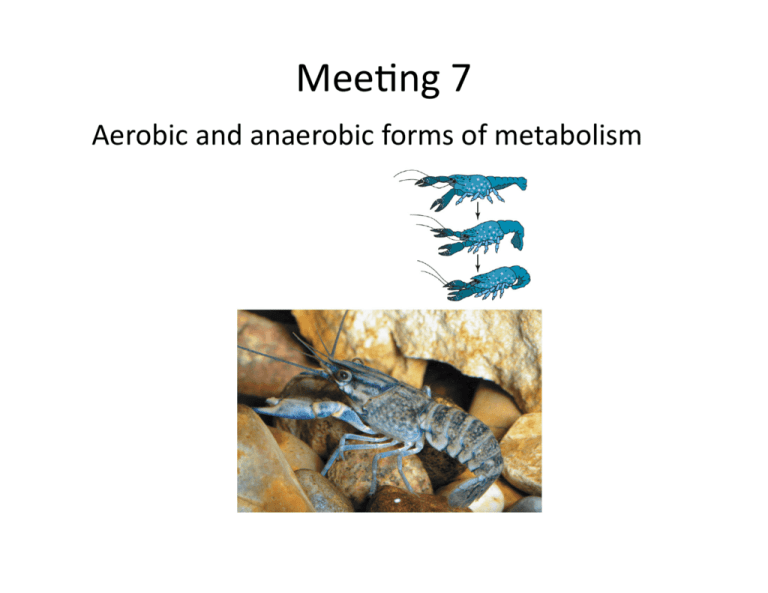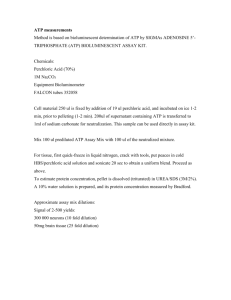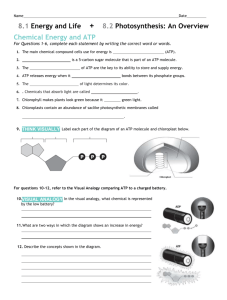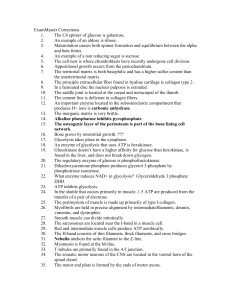Aerobic and anaerobic forms of metabolism
advertisement

Mee#ng 7 Aerobic and anaerobic forms of metabolism Key points for today • ATP molecule: cri#cal energy carrier! • How animals get ATP from food • Compare the different mechanisms of ATP produc#on • Interplay of aerobic and anaerobic metabolism when animals are ac#ve Cri#cal facts about ATP • ATP is an energy carrier in cells ADP + Pi + energy from food ATP ATP ADP + Pi + energy usable by cells • Does each cell have to make its own ATP? • Is ATP substan#ally stored in cells? Cri#cal facts about ATP • ATP is an energy carrier in cells ADP + Pi + energy from food ATP ATP ADP + Pi + energy usable by cells • Does each cell have to make its own ATP? Yes! • Is ATP substan#ally stored in cells? No! How do animals release energy from food molecules using O2? • Glycolysis reac#ons • Krebs cycle reac#ons • Electron transport chain / Oxida#ve phosphoryla#on reac#ons Glycolysis Glucose + 2 NAD 2 Pyruvic acid + 2 NADH2 + 2 ATP Krebs Cycle 2 Pyruvic acid + 8 NAD +2 FAD 6 CO2 + 8 NADH2 + 2 FADH2 + 2 ATP Electron transport + Oxida#ve phosphoryla#on (slick!) 10 NADH2 + 5 O2 10 H2O + 10 NAD + 30 ATP 2 FADH2 + 1 O2 2 H2O + 2 FAD + 4 ATP Key thing here: need O2 to get lots of ATP! Summary of aerobic catabolism (for carbohydrates) C6H12O6 + 6 O2 6 CO2 + 6 H2O + 38 ATP! Glycolysis: 2 ATP Krebs Cycle: 2 ATP Electron transport/oxida#ve phosphoryla#on: 34 ATP • need O2 to get lots of ATP from a glucose molecule • w/o NAD and FAD (from electron trans/oxida#ve phos), glycolysis and Krebs cycle shut down • O2 is cri#cal for ge\ng lots of energy from food! Anaerobic glycolysis: backup system • low efficiency (2 measly ATP per glucose) • does not work in all #ssues (not in brain!) • needs glucose and lactate dehydrogenase • ni^y recycling of NAD • causes buildup of lac#c acid • important source of ATP (when?) 4 mechanisms of ATP produc#on • • • • Aerobic catabolism using O2 from environment Anaerobic glycolysis (Trick 1) Phosphagen use (Trick 2) Aerobic catabolism using internal stores of O2 such as in myoglobin (Trick 3) Compara#ve proper#es of the 4 mechanisms of ATP produc#on Metabolic transi#ons at start and end of ac#vity Oxygen deficit Excess postexercise oxygen consump#on Mee#ng ATP costs of compe##ve running







